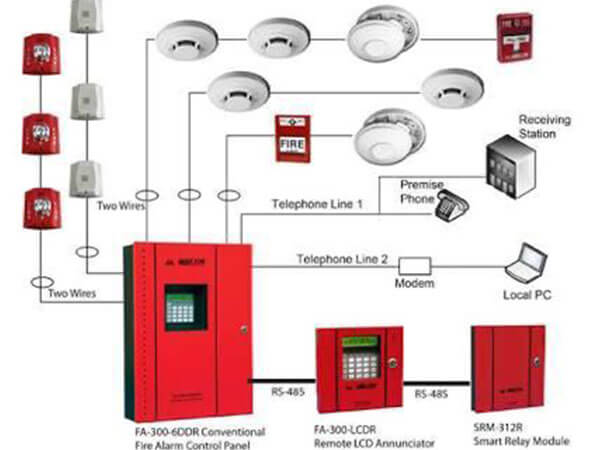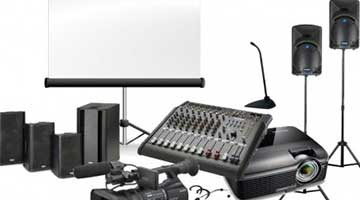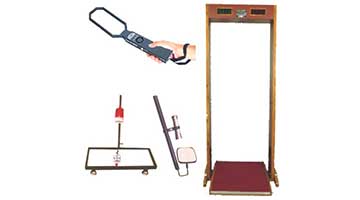Fire Alarm System
Having a fire alarm system has become an essential for building construction. As this system detects the occurrence of the fire and locates its location, and thus alerts the occupants to the need to act, and the system can be linked in different ways with the different fire fighting systems that extinguish the fire or protect other sites from spreading in large area.
The fire alarm system mainly consists of 3 parts :
1- Sensors
2- Control panel
3- Alarms
Sensors (fire alarm sensors)
1- Smoke detector:
its working theory depends on one of two things
** As for the presence of a light beam (optical) .. When a fire occurs, its smoke escalates, cutting the light beam, and the alarm will work .
** Through the ionization process (it was used for years and was canceled because the ionization process is harmful to the environment)
Important note: Several devices are distributed in the room to cover it completely, so that the distance between each device is no more than 7.5 meters
2- Heat detector:
it depends on a thermal sensor when the room temperature rises, the alarm works … Also, several devices must be distributed in the room so that the distance between each device is not more than 5.5 meters
There are two types of Heat detectors :
**The type works at 60 ° C … and is often used in most applications
**The type works at 90 ° C .. and is used in generators rooms
(Where the temperature is higher than 60 degrees is normal)
Important: It is known that the smoke detector is better than the Heat detector, but the Heat detector must be used in places where its fumes are normally present, such as kitchens and car garages
3- Multi-sensor detector:
This type is a mixture between the smoke detector and the Heat detector, and this type is more expensive in price but gives better effectiveness.
A very important note: Use an alternative sensor for a smoke detector only … it is used in garages or kitchens (where fumes are usually present)
4- Beam detector:
it is used at more altitudes from 4 to 5 meters … and it is the most expensive type
It consists of: the transmitter and the receiver and the receiver is just a reflective mirror that reflects the signal coming from the transmitter
**There are two types of it :
Type 1, the distance between them should not exceed 50 meters
– Another type2, the distance between them should not exceed 100 meters (the most expensive)
– The devices are installed at a height of 6 to 10 meters .. If the height exceeds 10 meters, the device will not work when the fire occurs.
Fire Control system(Main FACP)
: It consists of three parts
1- Screen to display options and information
2- (PCB) An electrical panel containing the electronic devices
3- The battery to provide the system with power even after power cuts, as the fire alarm device must work even after power outage.
Types of fire alarm systems:
Alarm systems detect and control fire and are divided into two systems
Analog (traditional) System: It is the system that depends on the group of detectors connected to each other on a specific area, giving a warning on this Zone through which the security man moves in this zone and find the location of the fire.
Addressable System: It is the system that relies on the group of detectors connected to each other in the region to take address ,numbers and names of places where the detector is located, so that when a fire appears on the control panel, the indication of the detector address ,number, the name of the region and the time of the occurrence of the fire appear
Alarms
It is divided into two types
1- Only sound alarm
2- Sound and light alarm
And the sound is a bell, a sound, or a horn
The light is a strong flash of light (strobe light) and is similar to the light of a camera flash.
Other devices in fire alarm systems :
Manual call point or break breaker: (such as used in subway cars)
It is always found on the roads and at the beginning of the fire escape stairs
** It is used to manually trigger the alarm or manually open the doors
The distance between every 2 manual contact points should not be less than 30 meters
It is from 1.2 meters to 1.35 meters, the MCB height is**
Be at the level of people
Fire alarm Systems Control Panel :
It controls the system, feeds it with the necessary efforts and monitors its work, as the alarm reaches it from the detectors, and it operates the bells, spouts and LEDs. – An audible and visual alarm is given when the fire occurs, and the area of its occurrence is determined. – It operates on the city electrical current (220 volts 50 Hz) and is equipped with backup batteries that work automatically in the event of a power outage and has a charger that charges the batteries when the current returns. – Equipped with the ability to self-test and give an audible alarm signal in the event of a malfunction in the panel or any part of the system components, or in the event of a power outage or batteries disconnected. Equipped with a key to give a general warning to evacuate the site. Equipped with a “relays” to stop the air conditioners and disconnect the electrical current
Cables
used to connect the fire alarm
: We use a special type of cable called thermoplastic shielded cables fireproof , and there are two types
The first type: a type that can withstand up to 950 degrees Celsius (more expensive in price) and does not require a pipe to contain it
The second type: a type that can withstand up to 105 degrees Celsius (cheaper in price), but requires a metal pipe to contain it in order to withstand the high temperature resulting from the fire
Important note: If the used distance is less than 3000 meters, we use cables with a cross section of 1.5 millimeters square
If the distance is greater than 3000 meters, the cross-sectional area of the wire must be increased to 2.5 millimeters square
Fire fighting systems and fire alarm systems: 3 common terms must be separated
Control Module : It means that I watch the thing and based on this control I act myself
Monitor Module : It means that I watch something and ask another person to do something based on this observation
Isolation Module : It is the process of disconnecting and connecting part of the fire alarm network for maintenance work and it is also used to disconnect the network when an electrical fault occurs
















